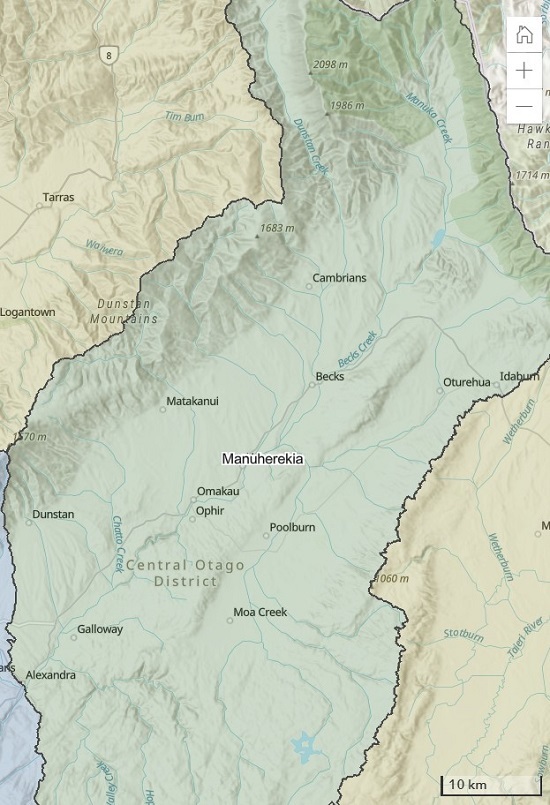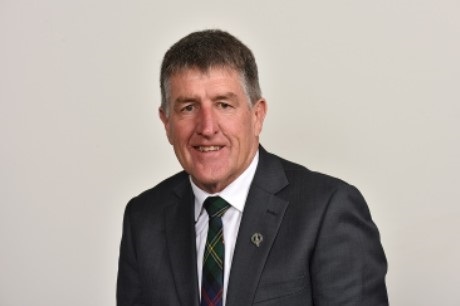Manuherekia Catchment work showing results
Jill Herron
24 April 2022, 6:30 PM
 A view across the valley looking toward the course of the Manuherekia River, Central Otago. Photo Jill Herron
A view across the valley looking toward the course of the Manuherekia River, Central Otago. Photo Jill HerronPlanting along riverbanks and the creation of wetlands is yielding clear improvements in the Manuherekia catchment, with more to come through $4M worth of funding from the Ministry for the Environment(MfE).
Otago Regional Councillor Kevin Malcolm says that while changes take a long time and balancing water care and commercial interest required effort, people were showing that “it can be done”.
Malcom was nominated this month as the elective representative for a MfE catchment overseer group, which has the rather wieldy title of the ‘Manuherekia Exemplar Catchment Programme Governance Group’.
He will join a MfE official observer and representatives from Kāi Tahu rūnaka, the existing Manuherekia Catchment Group, Department of Conservation, Fish and Game NZ, Forest and Bird plus an irrigation representative and an independent community representative.
The catchment was selected through a government ‘At-Risk Catchments (ARC) Programme’ within a $12M ‘Essential Freshwater’ nationwide fund. The programme aims stop further degradation of the country’s freshwater resources and start making immediate improvements so that water quality is “materially improving” within five years.
Malcolm believes that was already happening through considerable work being done by farmers and others over recent years.
He said people often didn’t see the huge amount of work being put in as farmers tended to quietly get on with it and not shout it from the rooftops.
At Thomsons Creek near Omakau water quality monitoring had shown considerable improvements as a result of fencing, planting and the creation of wetlands. The MfE fund had allocated $2.9M for work to continue here, with $1.3M tagged for general wetland creation in the catchment.
Farm irrigation systems could be used, he said, to channel water to areas to help this process.
In the past, although people had adhered to the rules of the day, waterways had suffered but change had begun to remedy things.
The Ministry’s nationwide goal is to get waterways into a healthy state within a generation, while addressing water allocation issues – something that has proved troublesome for this large chunk of typically-arid Central Otago. Environmental concerns around low water levels and water health have dominated many headlines.
“Some of those things didn’t work out too well in the past. Now you just look at some of these farms, there’s one that’s based on dairy grazing, close to a fully-irrigated property, that won an environmental award for their work.”

The vast Manuherekia Catchment covers over 3000sqkm. Photo ORC
The Catchment runs from Alexandra, along the right of the Dunstan Mountains and is bordered in the northeast by the Hawkdun Ranges. It incorporates many small communities and towns including Omakau, Becks, St Bathans, Oturehua, Poolburn and Moa Creek.
With farming being prominent and irrigation essential, communities have been affected by evolving rules around water use. Over recent years, water quantity has been a growing concern as well as water quality, according to the ORC.
Gold Miners Paved the Way
Water rights or ‘deemed permits’ in Central Otago were first allowed as mining rights for gold extraction. They had no expiry dates and were utilised until 31 years ago when the Resource Management Act became the ruling legislation, and resource consents something farmers and the
ORC had to start working toward. The aim was to have the matter sorted by October last year. Now the historic water permits cannot exist, new consents are needed.
Provision for these, put in place recently through Plan Change 7, for the Regional Plan, Water for Otago, includes that they generally will have a term of no more than six years.
Meanwhile setting minimum flows is an important part of freshwater management and in August 2021, ORC staff proposed a minimum flow in Alexandra that would start at retaining 30 per cent of the rivers low flow and increase to retain up to 50 per cent of the rivers low flow in 2037.
A group of councillors questioned the available science and what was put aside as a result represented $4.4M worth of work with over 26,000 staff hours spent preparing reports to justify recommending what some believed to be a more healthy minimum flow.
This involved leaving around 1200 litres per second flowing in the river which would increase to leaving 2000 litres per second by 2037.

Otago Regional Councillor Kevin Malcolm. Photo: ORC
The issue proved divisive for the council and was less than iwi, Kai Tahu ki Otago preferred to prioritise the health of the river, an ORC report stated. McKeague Consultants, however, representing the majority of irrigators in the catchment, had recommended leaving 1100 litres per second in the river, with no recommendation to increase that over time.
Malcom, one of those who voted not to accept the information at the time, says the science was incomplete and was now being “peer reviewed, ratified and completed” before being presented to a future ORC meeting.
There would be further discussion of the information which must be agreed upon and written into new planning by 2023.

